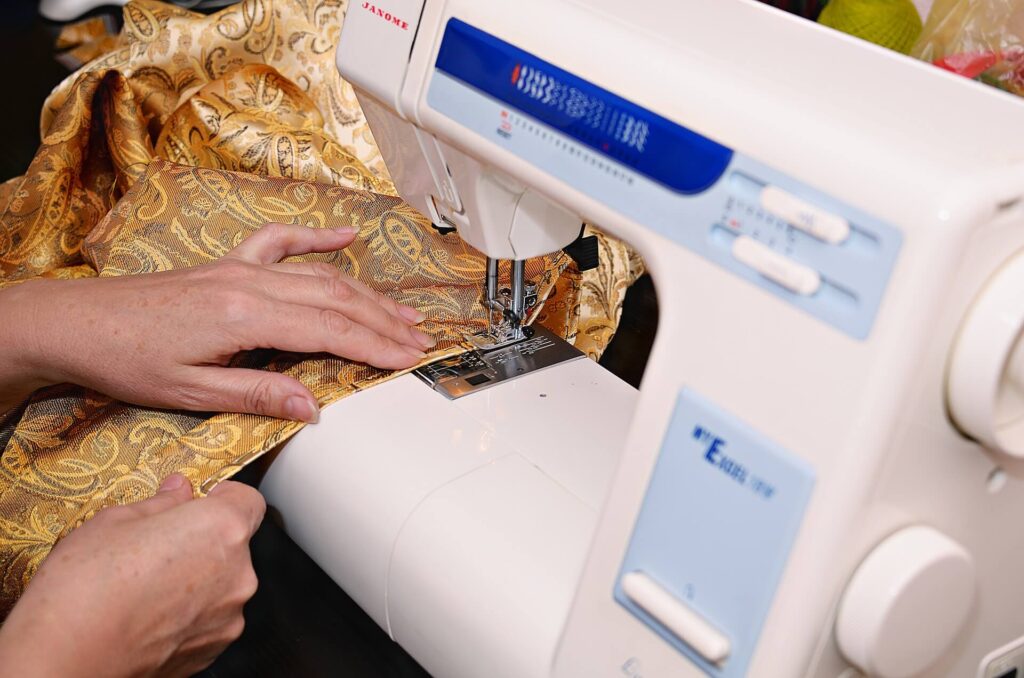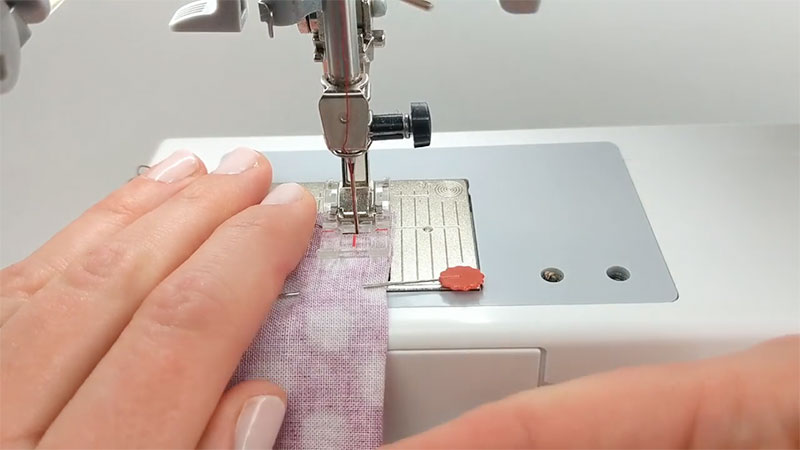In this article, we will delve into the intricacies of how sewing machines accomplish this and explore the significance of pin stitches in the world of sewing.
Sewing machines sew pin stitches by using a special foot called a pintuck foot.
The pintuck foot has a narrow channel that runs along the bottom of the foot. This channel guides the needle as it sews, creating a series of tiny, evenly-spaced stitches.
Instructions
- Thread your machine with a fine thread and use a light tension.
- Adjust the stitch length to a concise setting.
- Attach the pintuck foot to your machine.
- Place the fabric under the pintuck foot, with the edge of the fabric aligned with the channel of the foot.
- Sew slowly and evenly, guiding the fabric through the foot channel.

Tips
- Use a fine thread and a light tension to avoid puckering the fabric.
- Adjust the stitch length to a concise setting to create tiny, delicate stitches.
- Sew slowly and evenly to create consistent results.
- Use a presser foot to help guide the fabric.
- If you are sewing on a curved edge, you may need to adjust the stitch width to prevent the stitches from puckering.

FAQ
What is a pintuck foot?
A pintuck foot is a special sewing machine foot that is used to sew pin stitches. It has a narrow channel that runs along the bottom of the foot that guides the needle as it sews, creating a series of tiny, evenly-spaced stitches.
What type of thread should I use for pin stitches?
You should use a fine thread for pin stitches. A 50-weight or 60-weight thread is a good choice.
What stitch length should I use for pin stitches?
You should use a very short stitch length for pin stitches. A stitch length of 1.0 or 1.5 is a good starting point.
How can I avoid puckering the fabric when sewing pin stitches?
You can avoid puckering the fabric using a fine thread, a light tension, and a short stitch length. You can also use a presser foot to help guide the fabric.
What are some other ways to finish the edges of the fabric?
There are many other ways to finish the edges of the fabric, such as zig-zag stitches, overcasting stitches, and pinking shears.
The best way to finish the edge of a fabric will depend on the type of fabric and the desired effect.
How do I choose the right needle for delicate fabrics?
Choosing the right needle involves considering the fabric type and thickness. For delicate fabrics, opt for finer needles to prevent damage.
Can I use pin stitches for quilting projects?
Absolutely! Pin stitches are versatile and can be employed in quilting projects to secure layers and add a professional finish.
What should I do if my thread keeps breaking during sewing?
Check your machine’s tension settings and ensure you’re using the correct needle size. If issues persist, consider changing the thread or seeking professional assistance.
Are computerized sewing machines suitable for beginners?
Yes, many beginners find computerized sewing machines user-friendly.
They offer automation features that make learning to sew more enjoyable and less intimidating.
How can I contribute to sustainable sewing practices?
Choose eco-friendly fabrics, minimize waste through precise stitching, and explore upcycling projects to contribute to a more sustainable approach to sewing.
Conclusion
Pin stitches are a beautiful and delicate way to finish the edges of fabric.
They are perfect for use on sheer fabrics, hems, ruffles, and other embellishments.
With a little practice, you will be able to sew beautiful pin stitches that will add a touch of elegance to your projects.

